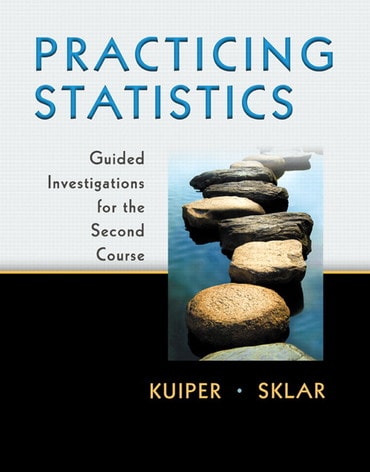Switch content of the page by the Role togglethe content would be changed according to the role

Practicing Statistics: Guided Investigations for the Second Course, 1st edition
Published by Pearson (February 28, 2012) © 2013
- Shonda Kuiper
- Jeff Sklar
VitalSource eTextbook
$49.99
ISBN-13: 9780321849274
Practicing Statistics: Guided Investigations for the Second Course
Published 2012
Paperback
$165.32
Price Reduced From: $206.65
ISBN-13: 9780321586018
Practicing Statistics: Guided Investigations for the Second Course
Published 2011
Need help? Get in touch